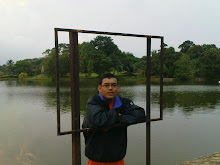

Iran appears to have used the designation "Azarakhsh" (Thunder) to reference at least three and possibly four different aircraft configurations. None of these designs has entered serial production, and the promiscuous use of this name remains something of a puzzle. Iran is under no obligation to disclose all the details of its arms program, and to the contrary, following the old Soviet maxim of "show the best and hide the rest" is evidently engaged in a perception management effort seeking to magnify its apparent military strength by displaying "new" weapons. Some part of the confusion about "Azarakhsh" may simply reflect the confusion of Western observers, but in their bewilderment they have been assisted by the Islamic Republic.
The “Azarakhsh” serial final version seen in 2008 had finer lines, a ram air inlet aft of the wing [common to all F-5s but in evidence on this variant] and leading edge extension (LEX) “teeth” in the wings. The most visible feature is that the basic layout of the plane has been changed from a low wing aircraft with air inlets above the wing to a mid-wing aircraft with inlets below the wings. The wings were probably set higher to allow wider choice of munitions.
The high performance of modern fighters such as the F/A-18 in air combat manoeuvers is due in large part to its aerodynamic shape, and in particular, to the effect of the sharp, highly- sweptback leading edge extension (LEX) that extends forward from each wing root. At angles of attack typical in air combat manoeuvres, each LEX generates a large vortex above the aircraft. The lifting forces due to the LEX vortices give the aircraft its manoeuvring capability. The manoeuvrability does not come without penalty, however. The centerline core of the LEX vortex can undergo the phenomenon of vortex bursting or vortex breakdown. This occurs when smooth, steady airflow along the vortex core suddenly breaks down and becomes disturbed and unsteady. The core also expands considerably in diameter. Under air combat manoeuvring conditions the unsteady flow downstream of the vortex burst position impacts on the fins and tailplane of the aircraft, causing high dynamic loads on these surfaces. Severe structural vibration results, with consequent detrimental effects on the fatigue life of the aircraft structure.
Survivability and structural requirements in advanced aircraft require cooling and thermal management of aircraft and propulsion structures. Additionally, some applications of aircraft technology, particularly those applications on supersonic aircraft, require sources of cooled, high pressure air. Conventional methods for propulsion system cooling in current aircraft engines typically employ either engine fuel, or air from one of the various sources in the propulsion system as a coolant. Among the traditional sources of cooling air are ram air from the inlet. A characteristic of fixed area inlet configurations is that the ducted air speed generally increases with vehicle speed and higher speeds generally improve the rate of convective heat transfer from the heat generating component to the ducted air. Low ducted air temperatures also improve the rate of heat transfer.

No comments:
Post a Comment